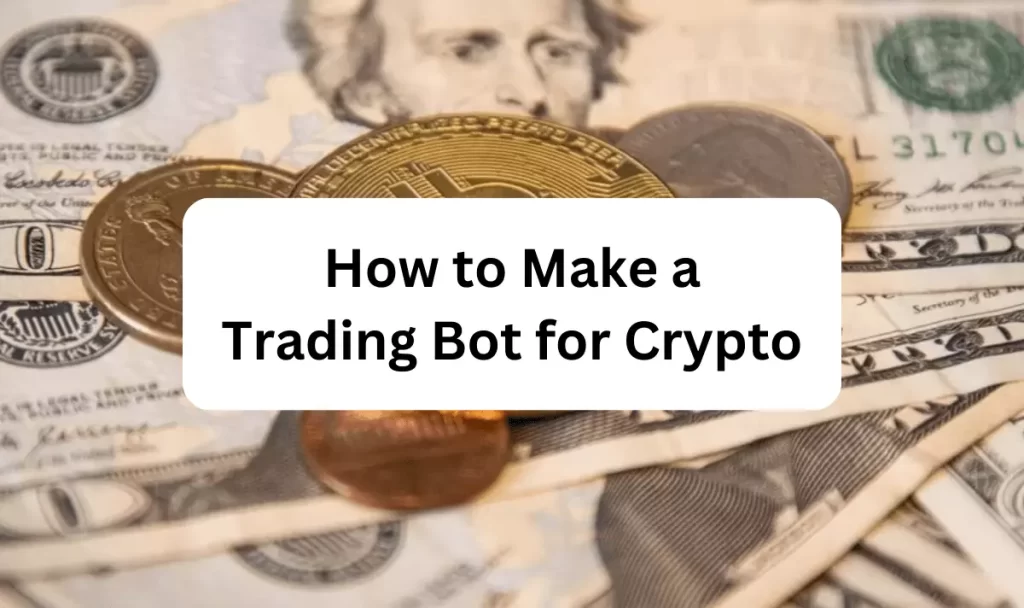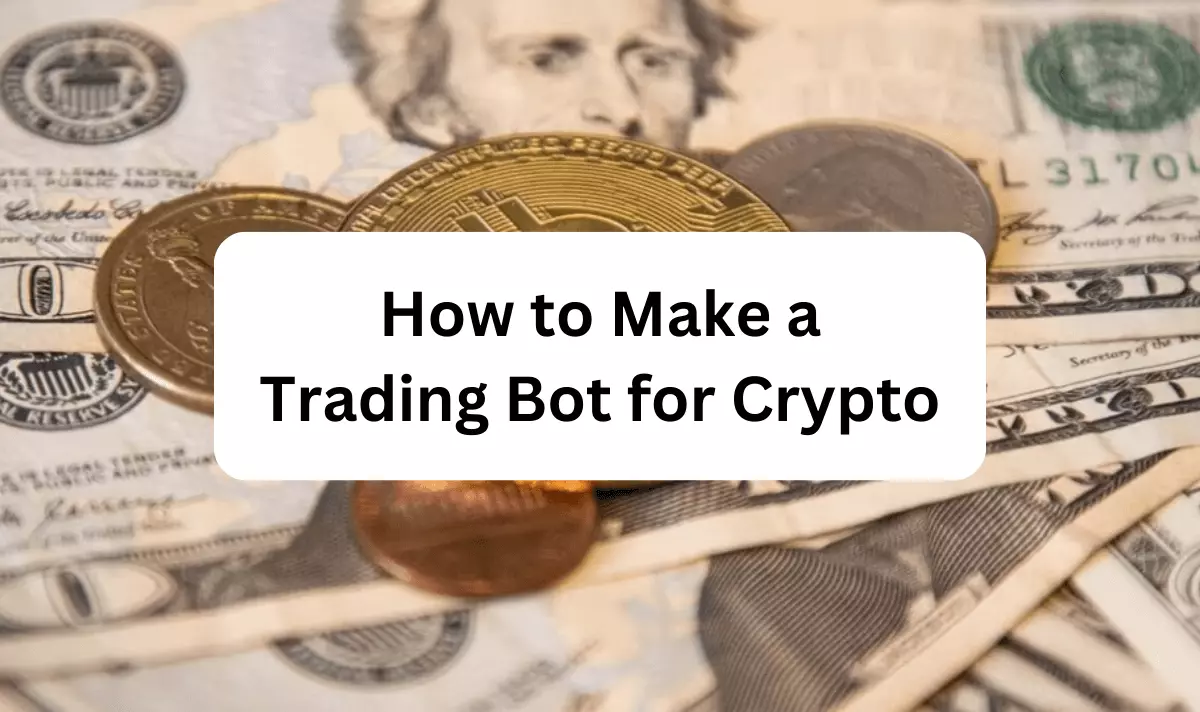
Introduction
Are you ready to explore the fascinating world of trading bots for cryptocurrencies? As a passionate crypto trader, I’ve discovered the immense potential of using automated trading tools to enhance my trading strategies. In this guide, I will take you on a journey to learn how to create your trading bot for crypto. By combining technical knowledge, programming skills, and a dash of creativity, you’ll unlock the power to automate your trades and seize opportunities in the dynamic crypto market. Let’s dive in and discover the secrets of building a profitable trading bot!
Discover more like this: What does GM mean Crypto
Content
Preparing for Bot Development

Before developing a trading bot for cryptocurrencies, it is crucial to prepare yourself adequately. I will guide you through the essential steps to ensure a smooth and successful bot development process.
1. Setting Up the Development Environment
To begin with, you need to set up a suitable development environment. This includes installing the necessary software and tools to write and test your bot’s code. I recommend using popular code editors like Visual Studio Code or PyCharm, as they provide a user-friendly interface and helpful features for efficient coding.
2. Choosing a Programming Language and Framework
Next, you’ll need to select a programming language and framework for your bot. Popular choices among traders include Python with libraries like Pandas and NumPy. These languages offer extensive support for data analysis and provide a wide range of libraries specifically designed for trading purposes.
3. Understanding APIs and Exchanges
To interact with the cryptocurrency market, you must familiarize yourself with APIs (Application Programming Interfaces) and exchanges. APIs allow your bot to fetch real-time market data, place trades, and retrieve account information. Each exchange typically has its API documentation that you can refer to for integration details.
4. Designing the Trading Bot
Before you start coding, defining your bot’s goals and strategies is crucial. Determine the specific trading signals and indicators your bot will utilize. This could include moving averages, RSI (Relative Strength Index), or Bollinger Bands. Additionally, decide on the trading algorithm that best aligns with your strategy, such as a trend-following or mean-reversion approach.
5. Implementing the Trading Bot
Now comes the exciting part: writing the code for your trading bot’s core functionality. This involves implementing the logic to analyze market data, generate trading signals, and execute trades automatically. Remember to handle data collection and analysis efficiently to ensure accurate decision-making by your bot.
6. Managing Risk and Implementing Safety Measures
In the world of trading, risk management is vital. Consider incorporating features in your bot to mitigate potential risks, such as setting stop-loss and take-profit orders. These safety measures can protect your investment from unexpected market movements and limit potential losses.
By adequately preparing for bot development, you’ll set yourself up for success. Take the time to set up the development environment, choose the right programming language and framework, and understand how to interact with APIs and exchanges. Design your bot with clear goals and strategies in mind, and implement it with careful attention to risk management and safety measures.
Remember, creating a trading bot requires dedication and continuous improvement. We will explore the crucial steps of backtesting and optimization to enhance your bot’s performance.
Implementing the Trading Bot

Now that you have designed your trading bot’s strategies and algorithms, it’s time to bring it to life. I will guide you through implementing your trading bot and transforming your ideas into functional code.
1. Writing the Core Functionality
To start implementing your trading bot, you’ll need to write the code that forms the core functionality. This includes fetching real-time market data, analyzing it using the defined indicators and signals, and generating actionable trading decisions. Using Python with libraries like Pandas and NumPy simplifies the implementation process.
2. Handling Data Collection and Analysis
Accurate and reliable data collection and analysis are essential for the success of your trading bot. You’ll need to fetch historical and real-time market data from exchanges using APIs and store it in a structured format. With this data, you can apply technical indicators and statistical models to identify trading opportunities. For instance, I use the Exponential Moving Average (EMA) to determine potential trends.
3. Executing Trades Automatically
Once your bot has analyzed the data and generated trading signals, it’s time to automate the execution of trades. You can programmatically place buy and sell orders through API integration with your chosen exchange. Remember to implement appropriate error handling and validation checks to ensure smooth execution.
4. Risk Management and Safety Measures
Risk management is crucial in trading, and your bot should be equipped to handle it. Implement stop-loss and take-profit orders to limit potential losses and secure profits. Additionally, consider setting position sizing rules to ensure proper allocation of funds and reduce exposure to high-risk trades.
5. Monitoring and Iterative Improvements
Once your bot is up and running, it must monitor its performance continuously. Evaluate its effectiveness by analyzing key metrics like profitability, win rate, and drawdown. Identify areas for improvement and implement iterative changes to enhance your bot’s performance over time. For instance, I frequently fine-tune my bot’s parameters based on market conditions and historical analysis.
Implementing a trading bot requires translating your strategies into functional code. You can create a powerful trading tool by writing the core functionality, handling data collection and analysis, automating trades, and incorporating risk management features. Remember to monitor and iterate on your bot’s performance to drive continuous improvement.
Managing and Fine-Tuning the Bot

Once your trading bot is up and running, it’s crucial to manage and fine-tune it to ensure optimal performance actively. I will guide you through the key steps of managing and refining your bot, drawing on personal experience and real-life examples.
1. Reviewing and Analyzing Bot Performance
Regularly reviewing your bot’s performance is essential for making informed decisions. Analyze key metrics such as profitability, win rate, and drawdown to gauge its effectiveness. For instance, I analyze my bot’s performance weekly and identify patterns or anomalies that require attention.
2. Monitoring Market Conditions and Adjusting Strategies
Markets are dynamic and ever-changing, so keeping a close eye on market conditions is crucial. Stay updated with the latest news, trends, and market sentiment to adjust your bot’s strategies accordingly. For example, I incorporate news sentiment analysis to detect market-moving events and adjust my bot’s risk parameters.
3. Implementing Updates and Improvements
As you gain insights from performance analysis and market monitoring, implement updates and improvements to enhance your bot’s functionality. Continuously optimizing your bot’s algorithms, indicators, and risk management features can lead to improved performance. I regularly fine-tune my bot’s parameters based on historical data analysis and emerging market trends.
4. Continual Evaluation and Improvement
To ensure your bot remains effective, ongoing evaluation is necessary. Keep track of performance metrics and compare them against predefined benchmarks. Identify areas for improvement and implement iterative changes. Regularly assessing and fine-tuning your bot will help it adapt to changing market conditions.
5. Staying Informed and Evolving
Successful bot management requires staying informed about the latest developments in the cryptocurrency market. Engage in online communities, follow expert blogs, and participate in trading forums to gain insights and share experiences with like-minded traders. Continuous learning and adapting your strategies will help you stay ahead of the curve.
Managing and fine-tuning your trading bot is a dynamic and ongoing process. By reviewing performance, monitoring market conditions, and implementing updates and improvements, you can optimize your bot’s performance and adapt it to changing market dynamics. Remember to stay informed, evaluate regularly, and evolve your strategies to maximize your bot’s effectiveness.
Conclusion
In the ever-evolving world of cryptocurrencies, the power of trading bots can be a game-changer. Through my personal experience, I have witnessed how creating a trading bot for crypto opens up a world of opportunities. By leveraging your technical knowledge, programming skills, and a dash of creativity, you can automate your trades and take advantage of market fluctuations. Building a successful trading bot requires continuous learning, adaptability, and a keen eye for market trends. So, embark on this exciting journey, unlock the potential of automated trading, and let your bot navigate the crypto market with precision and profitability. Happy trading!
u003cstrongu003eHow do I choose the right programming language for my trading bot?u003c/strongu003e
When selecting a programming language for your trading bot, consider factors like your familiarity with the language, its performance capabilities, and the availability of relevant libraries. Python is a popular choice due to its simplicity, extensive libraries (such as Pandas and NumPy), and strong community support for crypto-related tasks.
u003cstrongu003eCan I use historical data for backtesting and optimizing my trading bot?u003c/strongu003e
Yes, historical data is valuable for backtesting and optimizing your bot. By simulating trades using past market data, you can evaluate your bot’s performance and fine-tune its strategies. Historical data allows you to test different parameters, indicators, and risk management techniques to improve your bot’s profitability.
u003cstrongu003eHow can I access real-time market data for my trading bot?u003c/strongu003e
To access real-time market data, you need to integrate your trading bot with cryptocurrency exchanges that offer APIs. These APIs allow you to fetch live price data, order book information, and account details. Each exchange typically provides documentation and guidelines on how to use its API effectively.
u003cstrongu003eWhat risk management measures should I implement in my trading bot?u003c/strongu003e
Implementing risk management measures is crucial to protect your investment. Some common risk management techniques include setting stop-loss orders to limit potential losses, using position sizing to allocate the appropriate amount of capital to each trade, and diversifying your trading strategies to minimize exposure to specific assets or market conditions.
u003cstrongu003eHow can I ensure the security of my trading bot and my funds?u003c/strongu003e
Security is paramount when developing a trading bot. Some best practices include using secure coding practices to prevent vulnerabilities, enabling two-factor authentication for API access, and keeping your API keys encrypted and protected. Regularly monitor your bot’s activity and review your exchange account’s security settings to mitigate potential risks.

Wesley has been a crypto enthusiast for a year. He’s an avid watcher of all the latest developments in the space, and enjoys predicting what will happen next with his favorite coins.
He lives in his hometown of New York City with his wife and two sons. His hobbies include watching movies, playing basketball, and reading about how to survive disasters that may occur from climate change or an asteroid impact!








